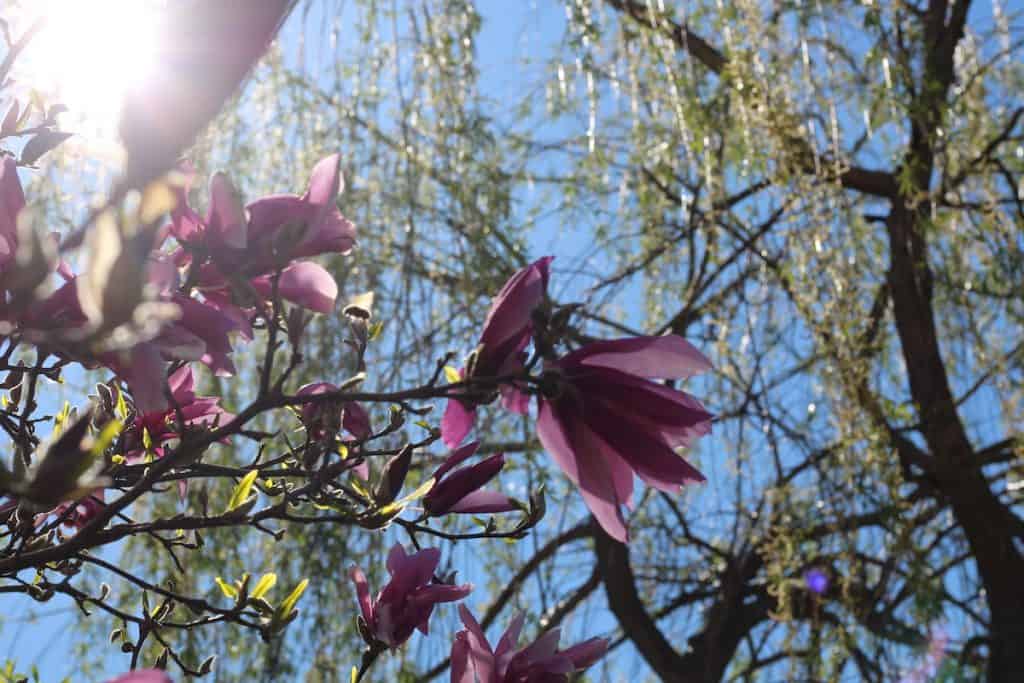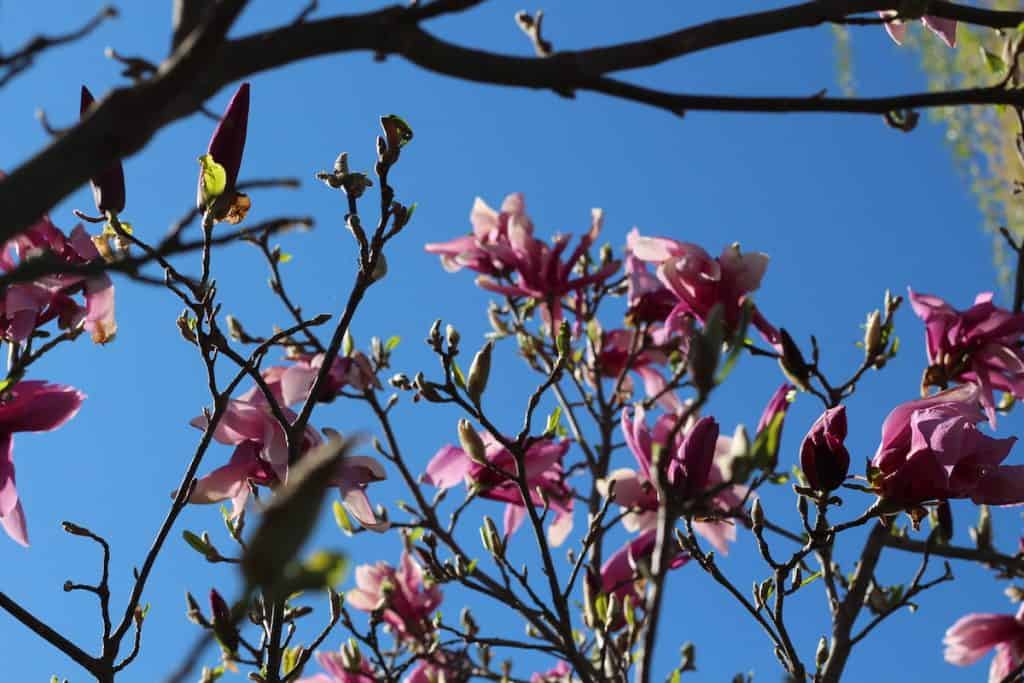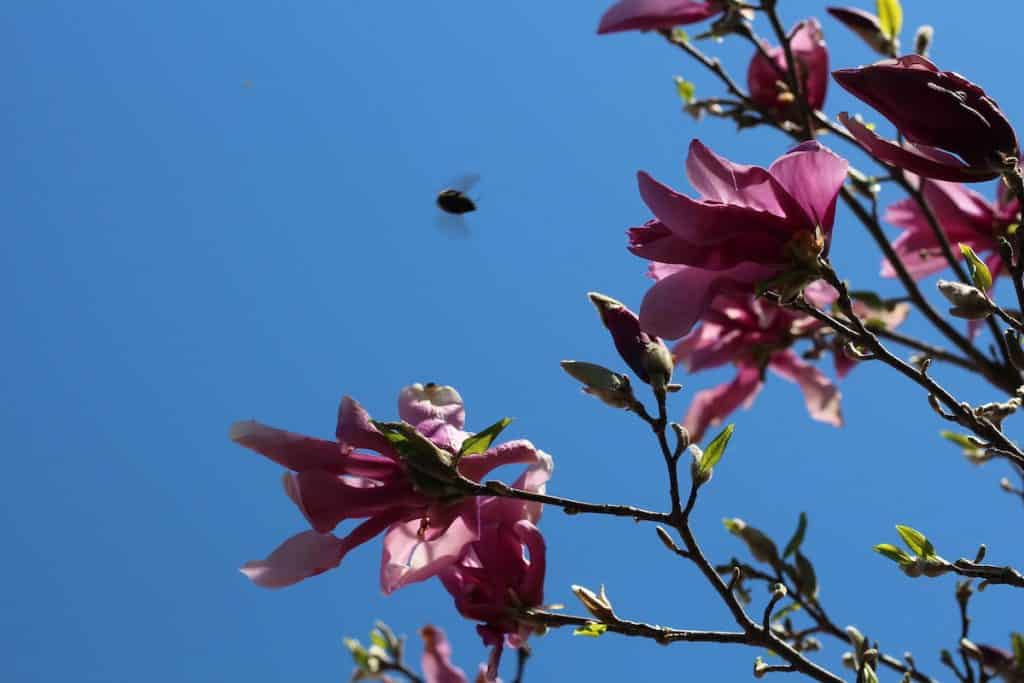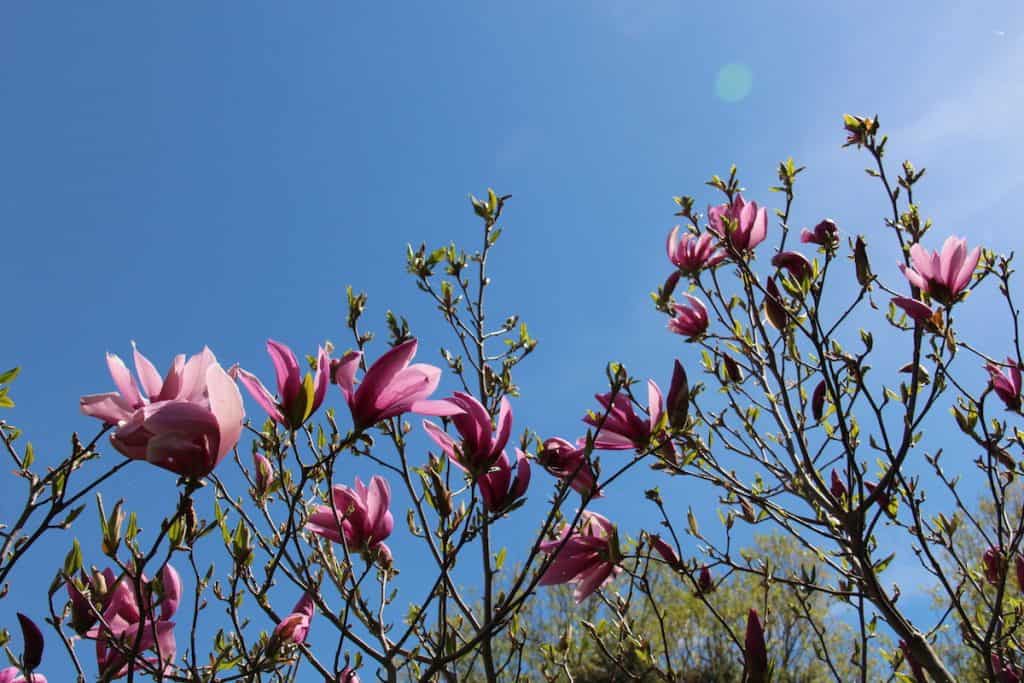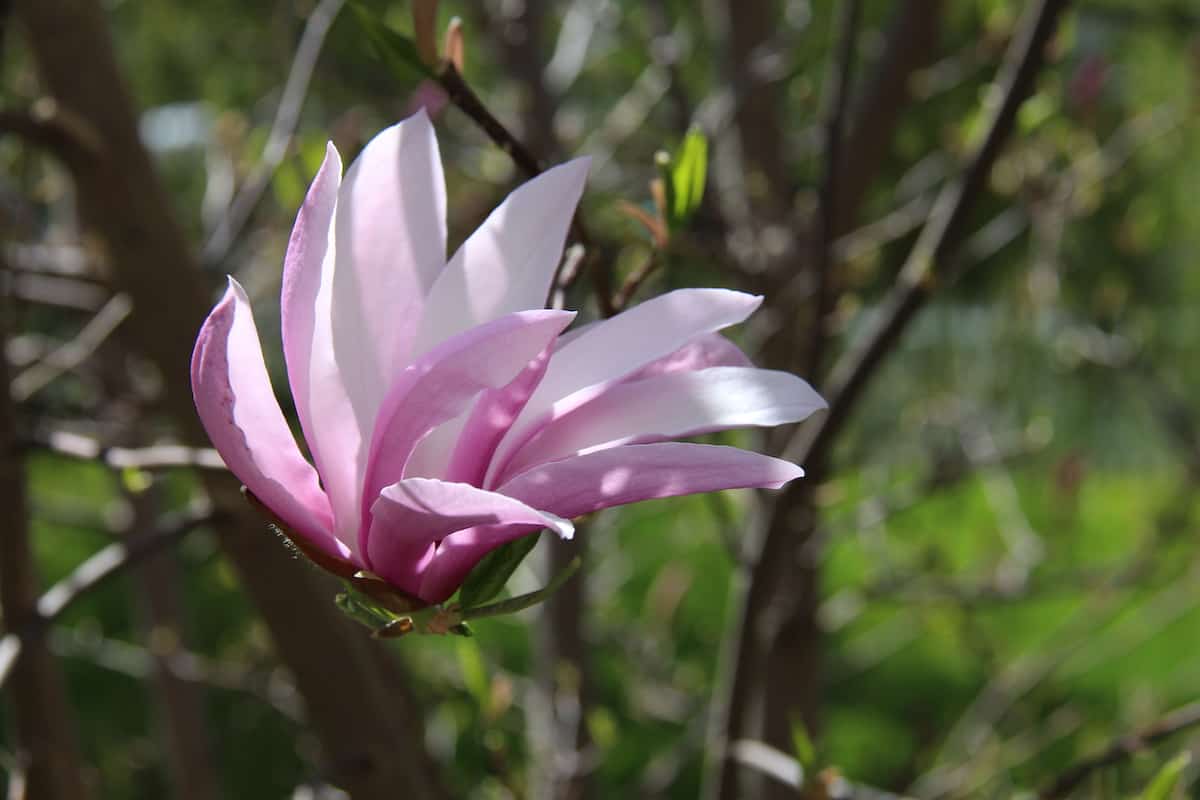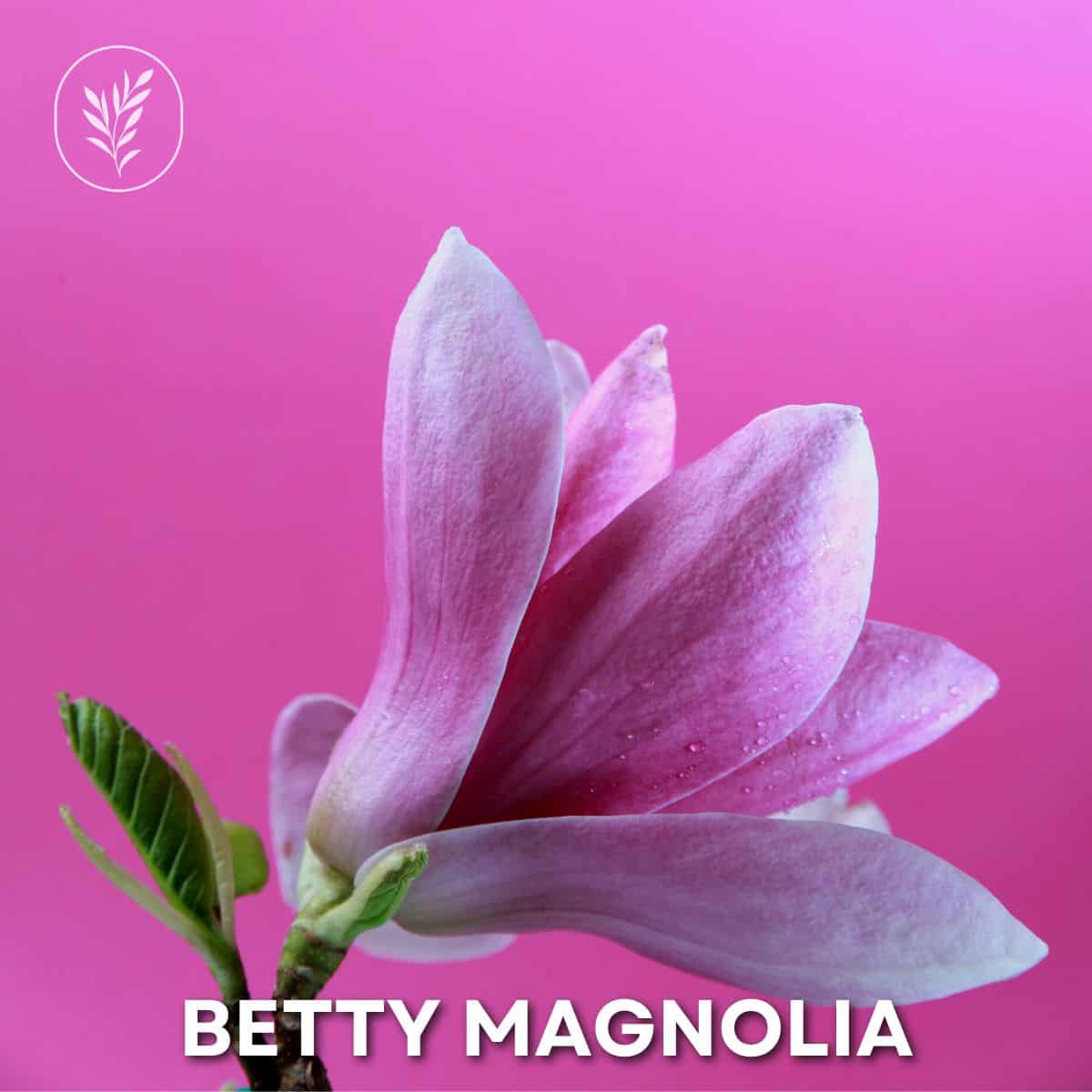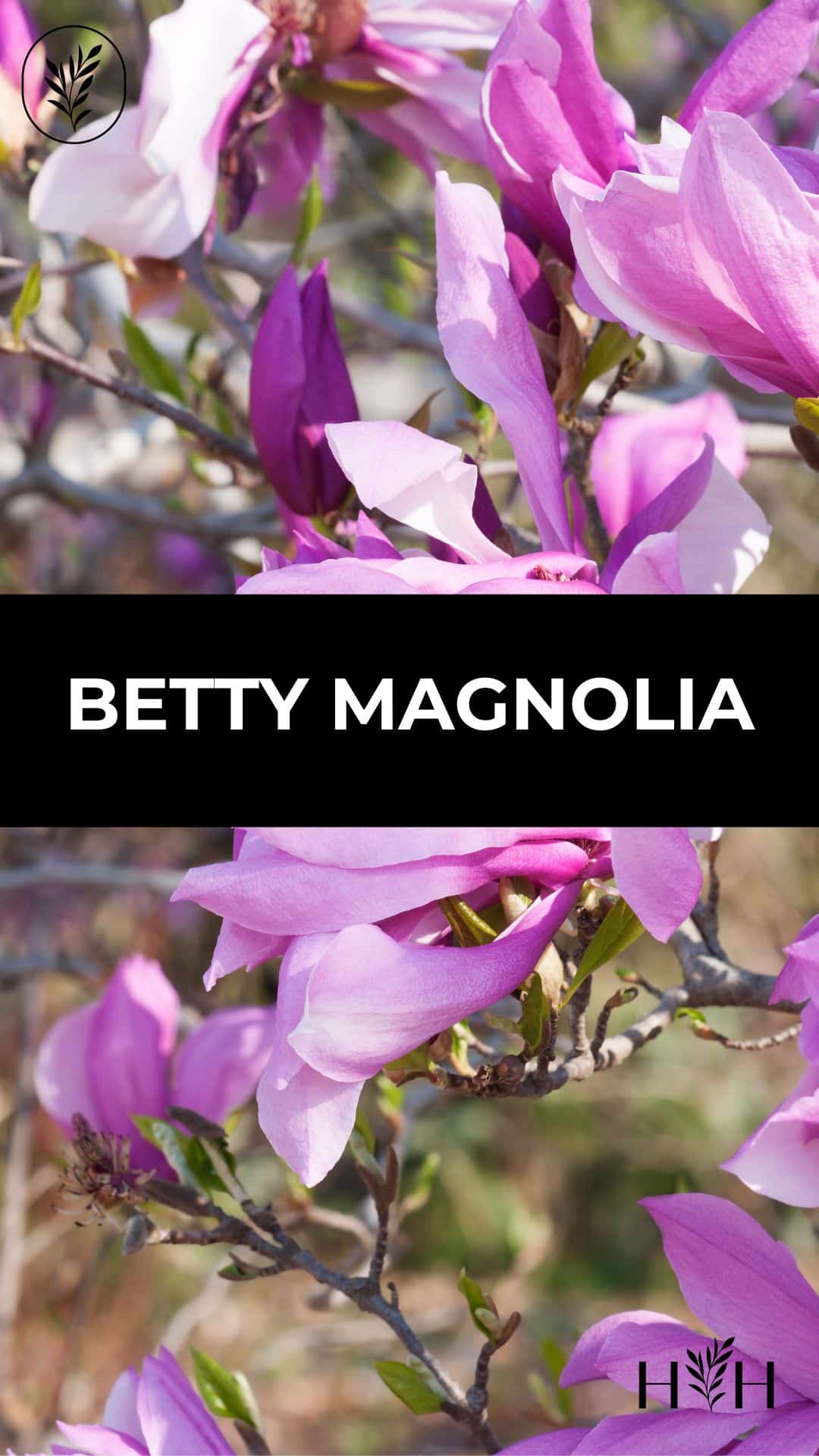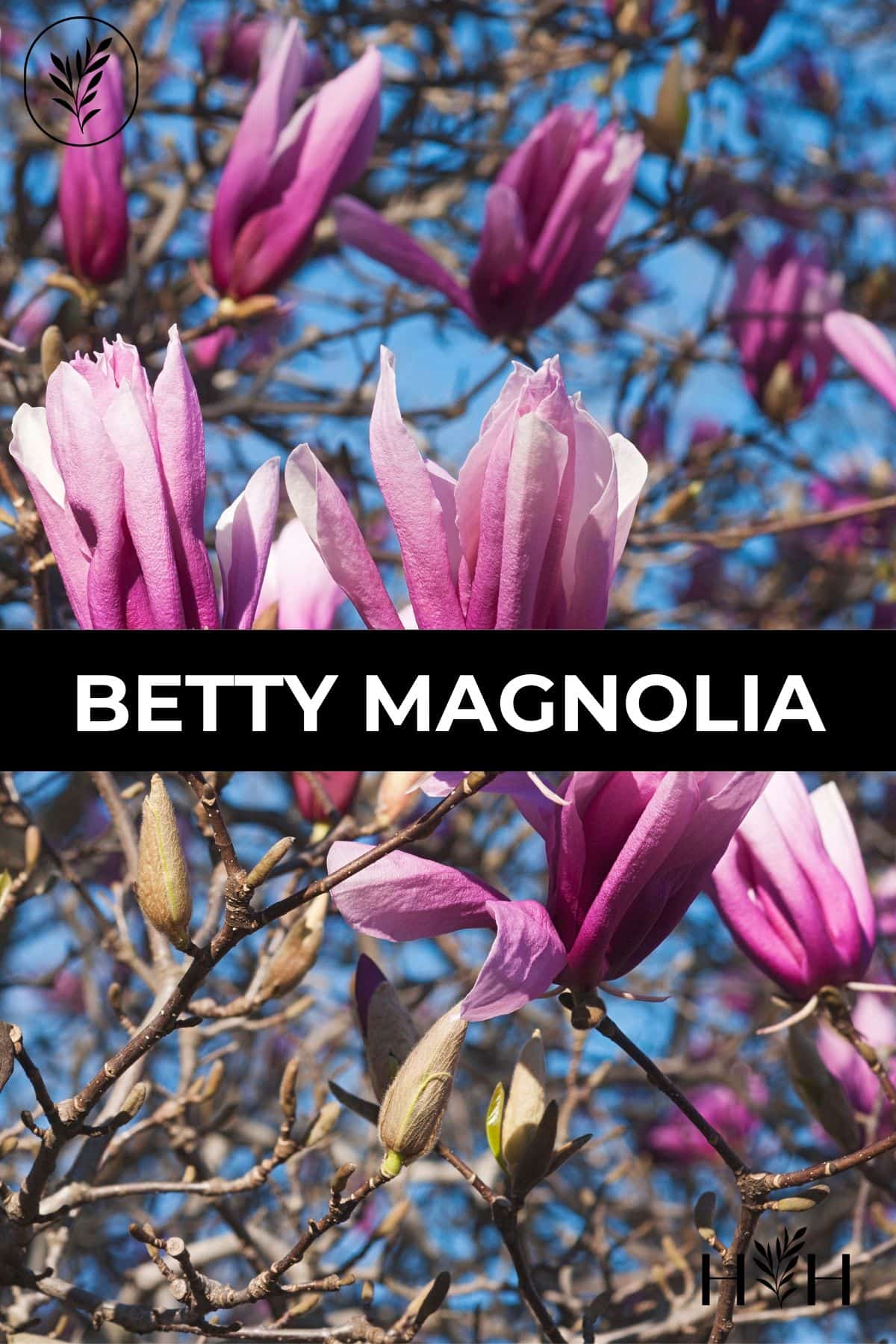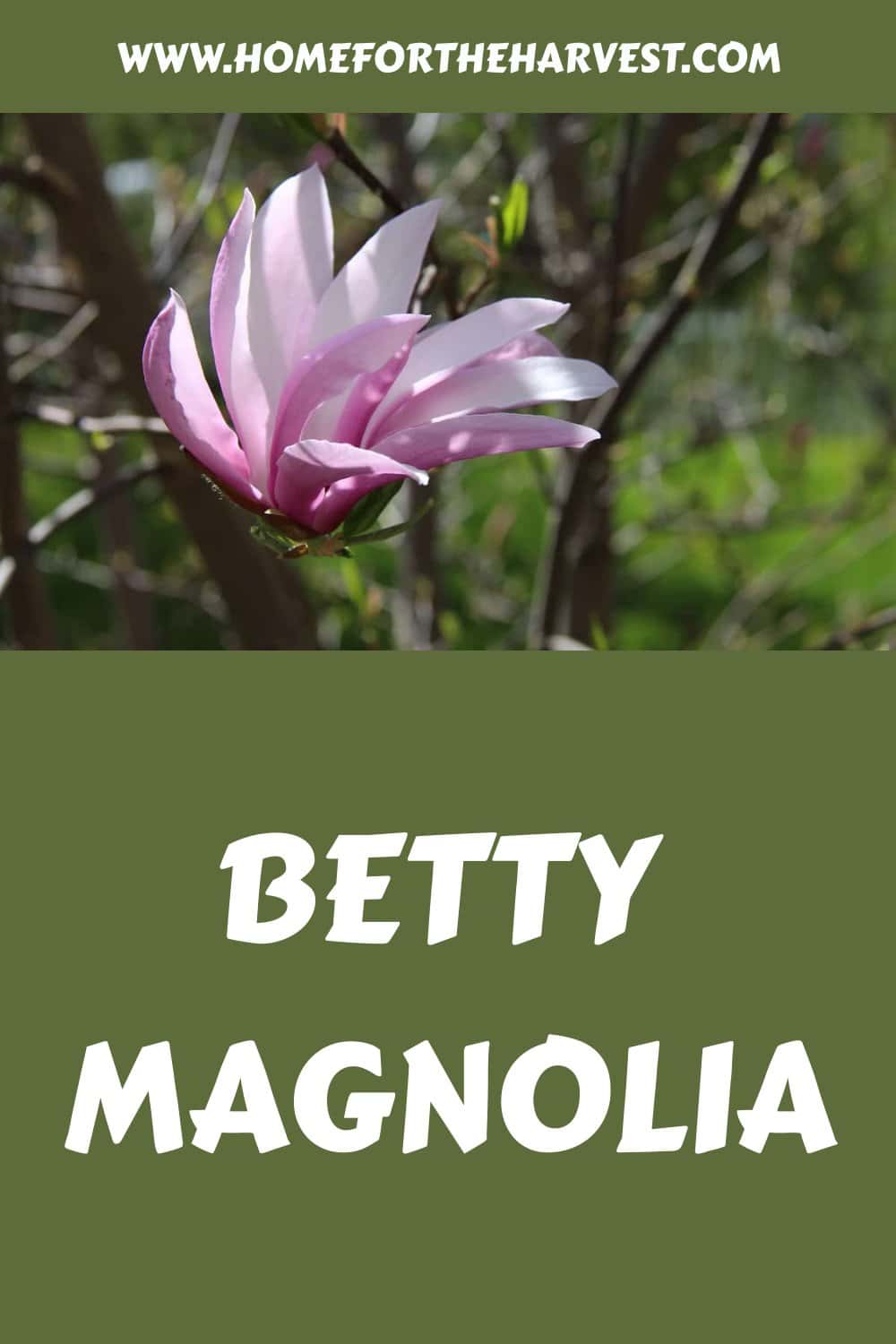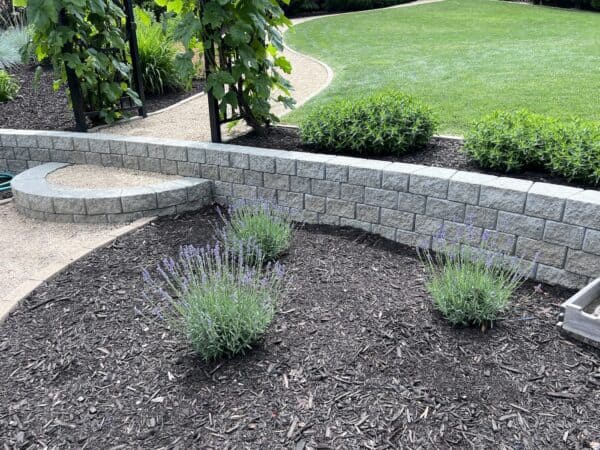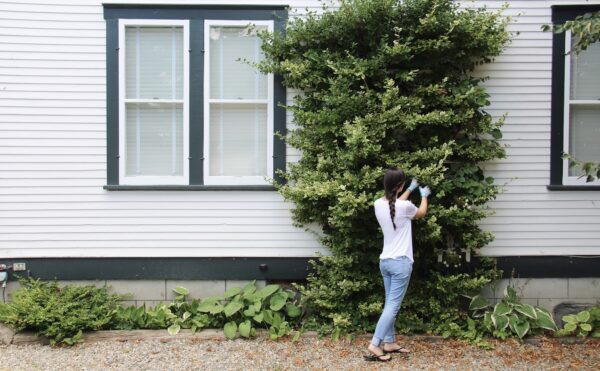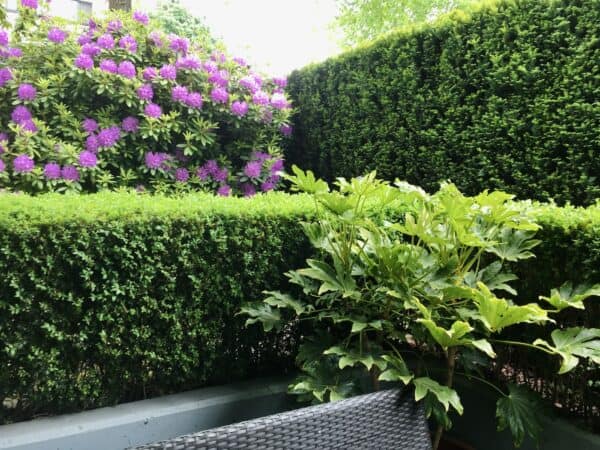Magnolia “Betty” is a spring-flowering deciduous plant that makes a wonderful specimen tree in residential yards. These magnolias are easy to grow, low-maintenance, frost-hardy, and smaller than some of their relatives, growing to a maximum of about 15′ in good conditions. Plant your own Betty magnolia, and you’ll be looking forward to its stunning pink blooms every springtime!
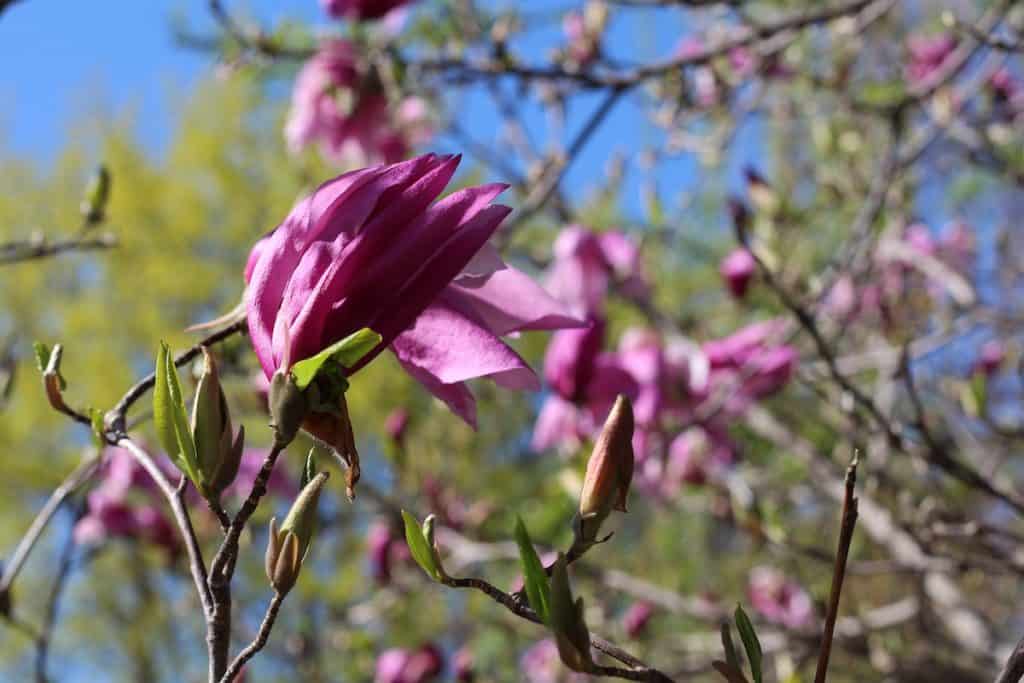
Betty Magnolia trees: The basics
Betty Magnolia (Magnolia ‘Betty’) is a hybrid magnolia that’s a cross between a lily magnolia and a star magnolia (M. liliflora ‘Nigra’ and M. stellata ‘Rosea’). Both the lily magnolia and the star magnolia are Asian magnolias, and this particular cross is a perfect mix of its parent plants.
The “Betty” Magnolia was bred in the States to have the lily-like large pink flowers of the lily magnolia while retaining the cold tolerance of the star magnolia. Best of all, these lovely blossoms were bred to bloom a week or two later then their parent cultivars. That means fewer years where the blossoms are damaged by frost. What a perfect combination!
There are also other magnolia cultivars from the same breeding series (The Little Girl Magnolias – they all have women’s names). For instance, Magnolia “Jane” is from the same series and has similar characteristics to the “Betty” (although each plant in the series is slightly different).
“Since success of first M. x soulangeana hybrids, breeders have focused on producing bigger brighter magnolias. Notable are De Vos & Kosar’s Eight Little Girls, Gresham hybrids from America, and those by Jury family of New Zealand.”
Trees and Shrubs: A Gardener’s Encyclopedia, by Geoff Bryant and Tony Rodd
Here is a video I made showing the oldest Betty Magnolia in our yard (~15 years) in bloom with its characteristic deep rose flowers, along with some photos showing the whole plant:
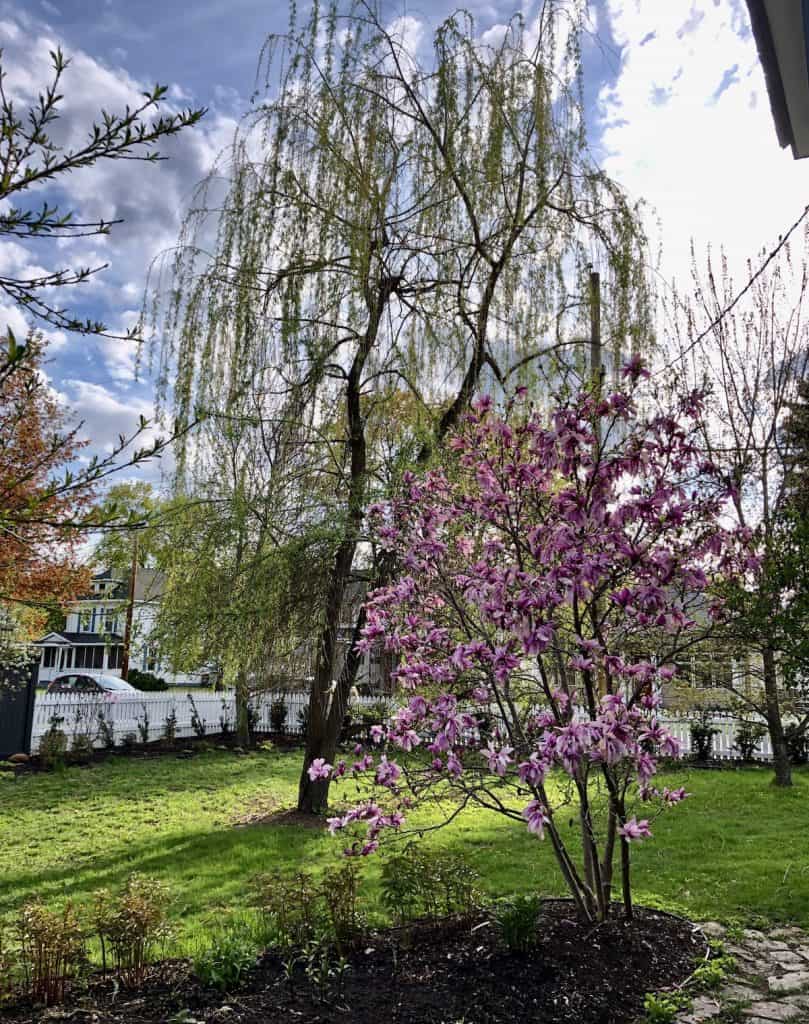
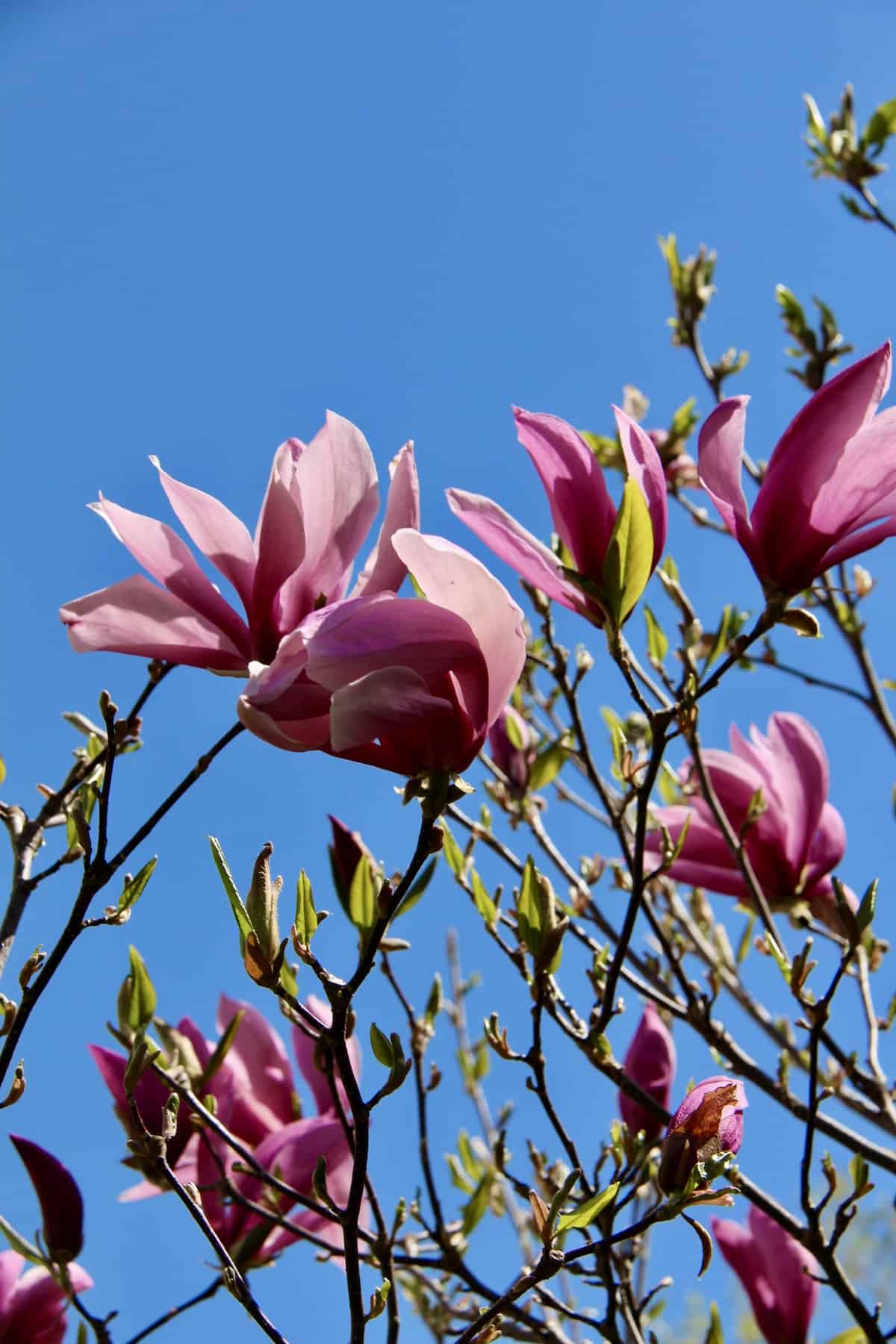
Betty Magnolia spring blossoms
The Betty Magnolia typically flowers at the end of April through the beginning of May. The gorgeous, large flowers make this plant a true Springtime thriller in the garden landscape. The blossoms are a lovely pink color with shades of white and purple, and also have a wonderful soft floral scent. Betty magnolia blossoms usually have about 10-12 petals on them.
These magnolias are wonderful for pollinators. Their blooms are visited by bumblebees, honeybees, and hummingbirds in our yard. The butterflies also seem to love them.
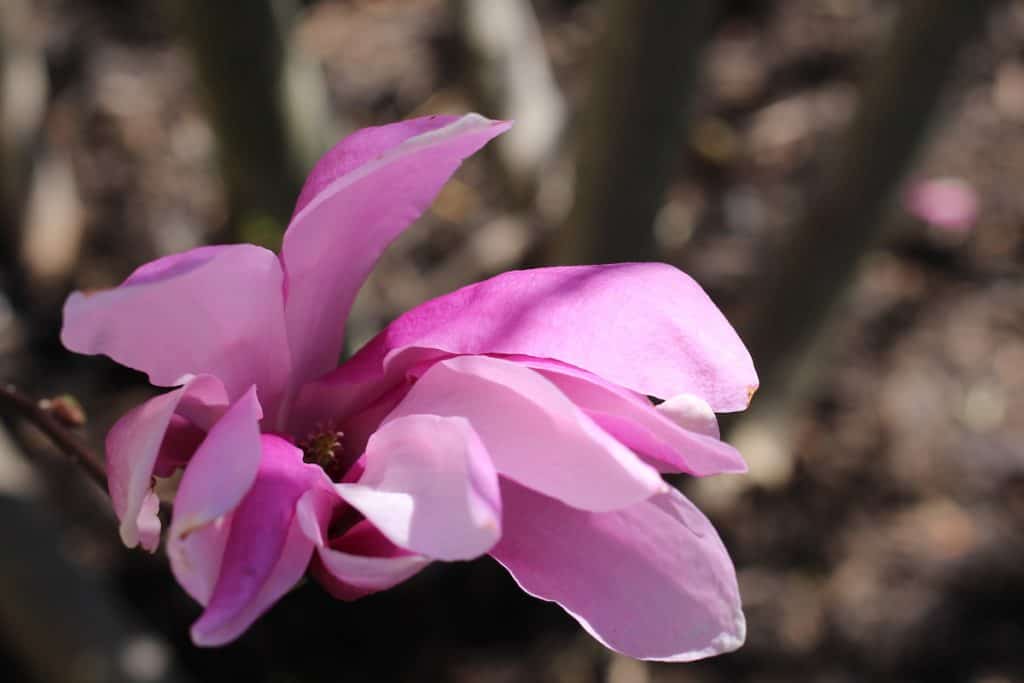
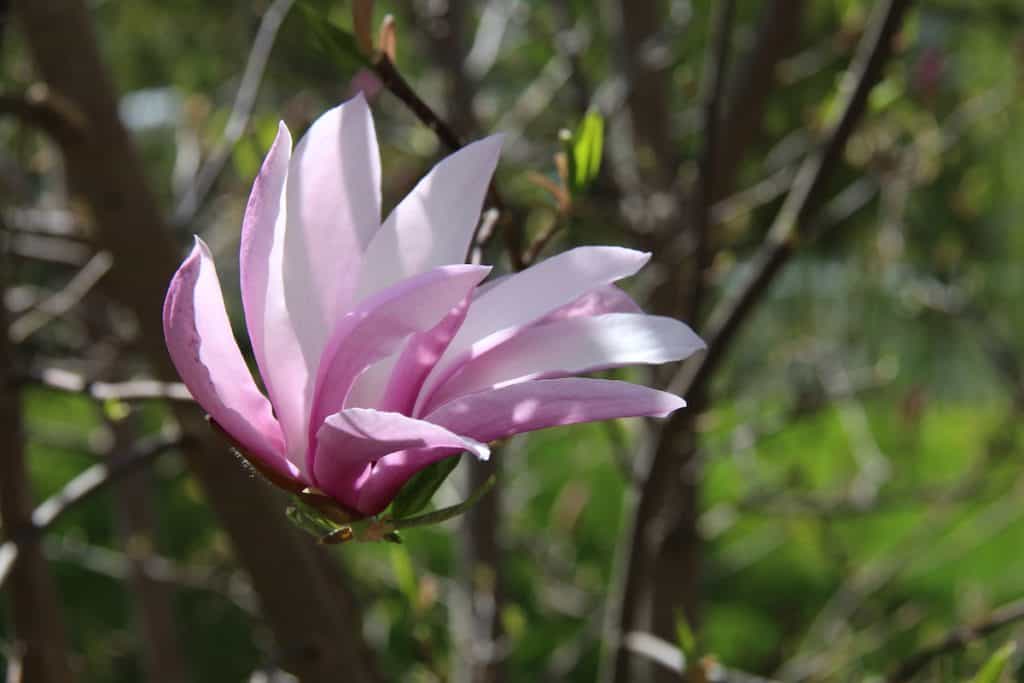
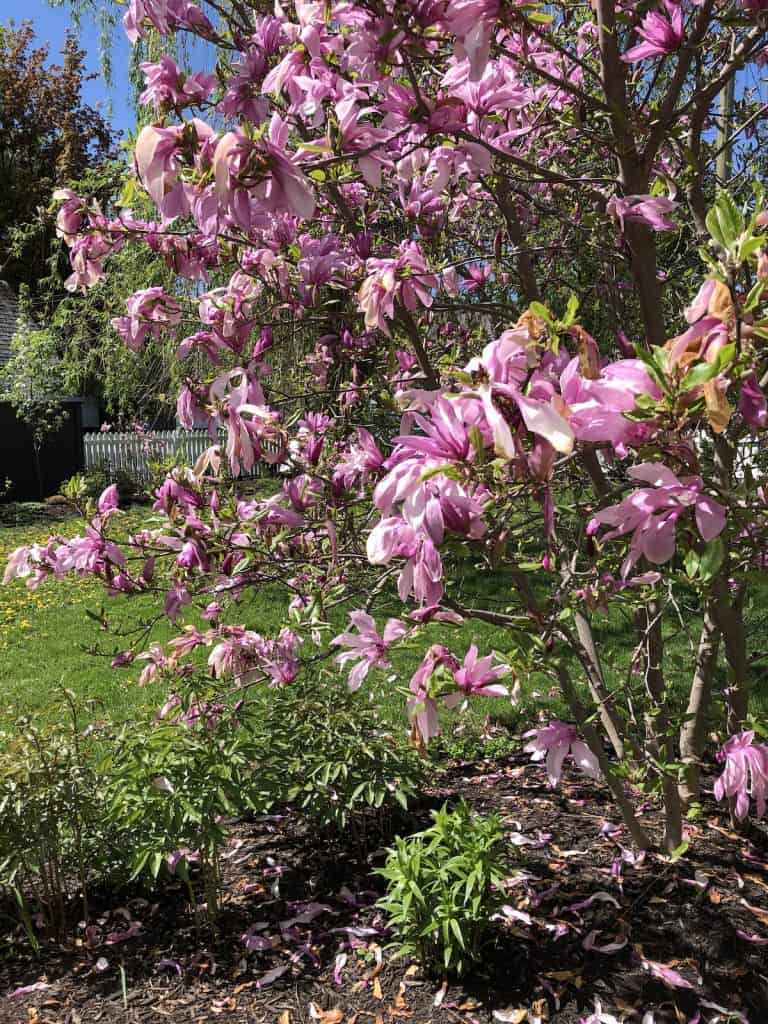
The Betty Magnolia does grow a few more sporadic flowers throughout the summer. These can be left to bloom on the tree or used in summertime floral arrangements. Here is a photo of a pink flower bud on a Betty Magnolia in mid-August:
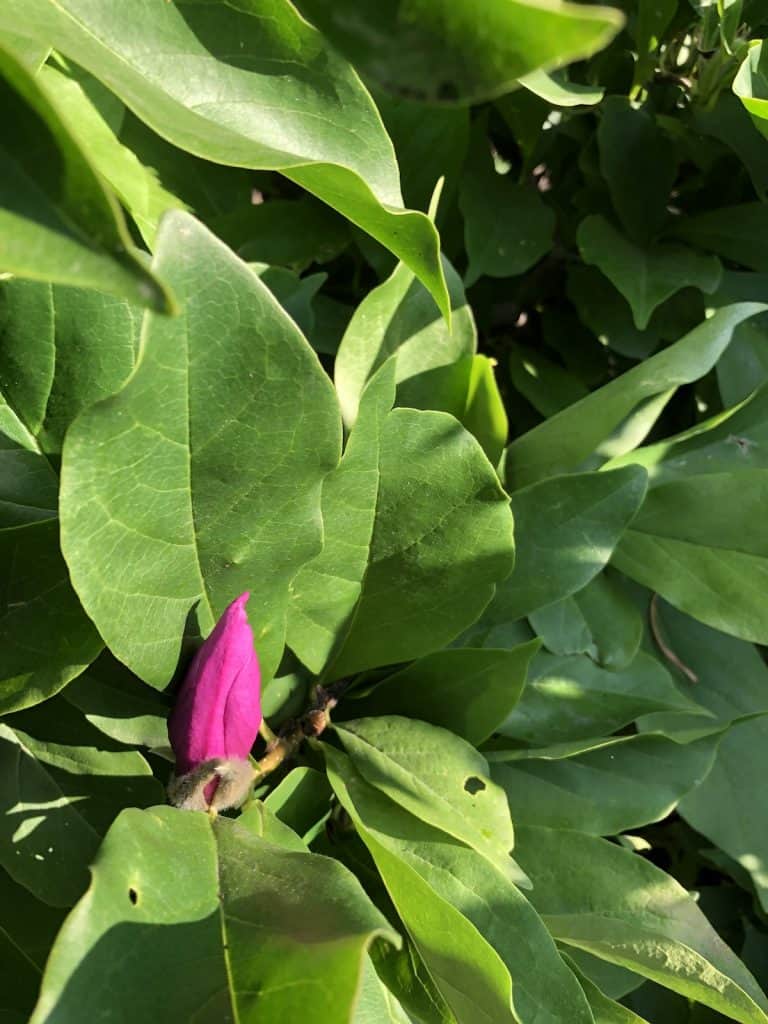
The midsummer blossoms are few and far between, but they sure look lovely against the rich green leafy backdrop!
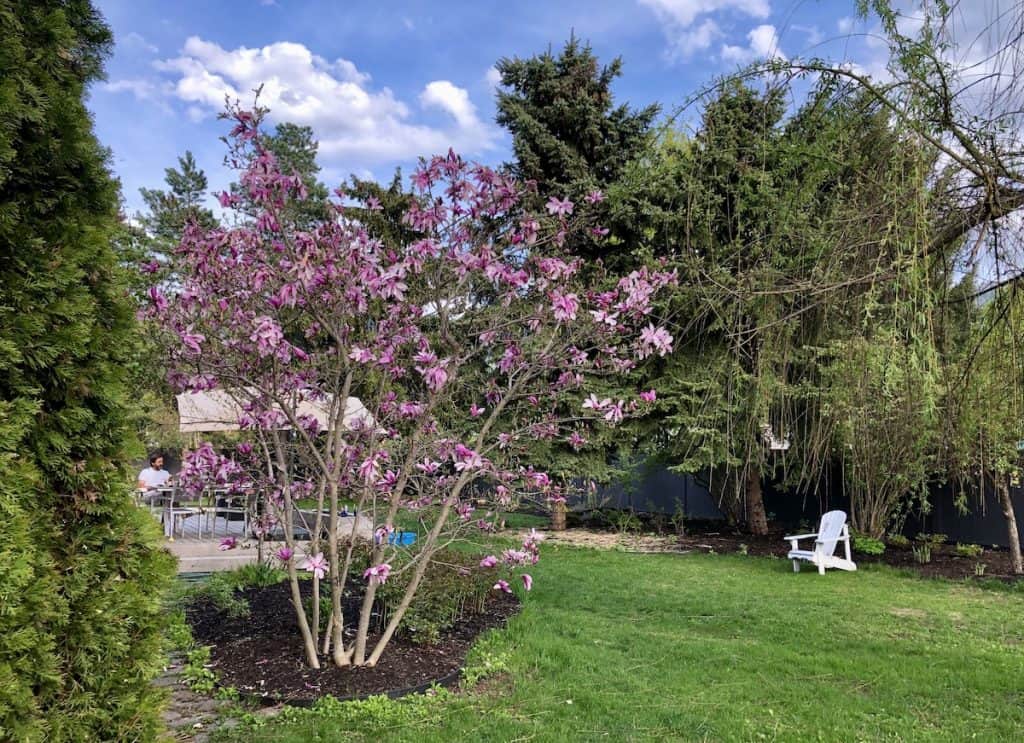
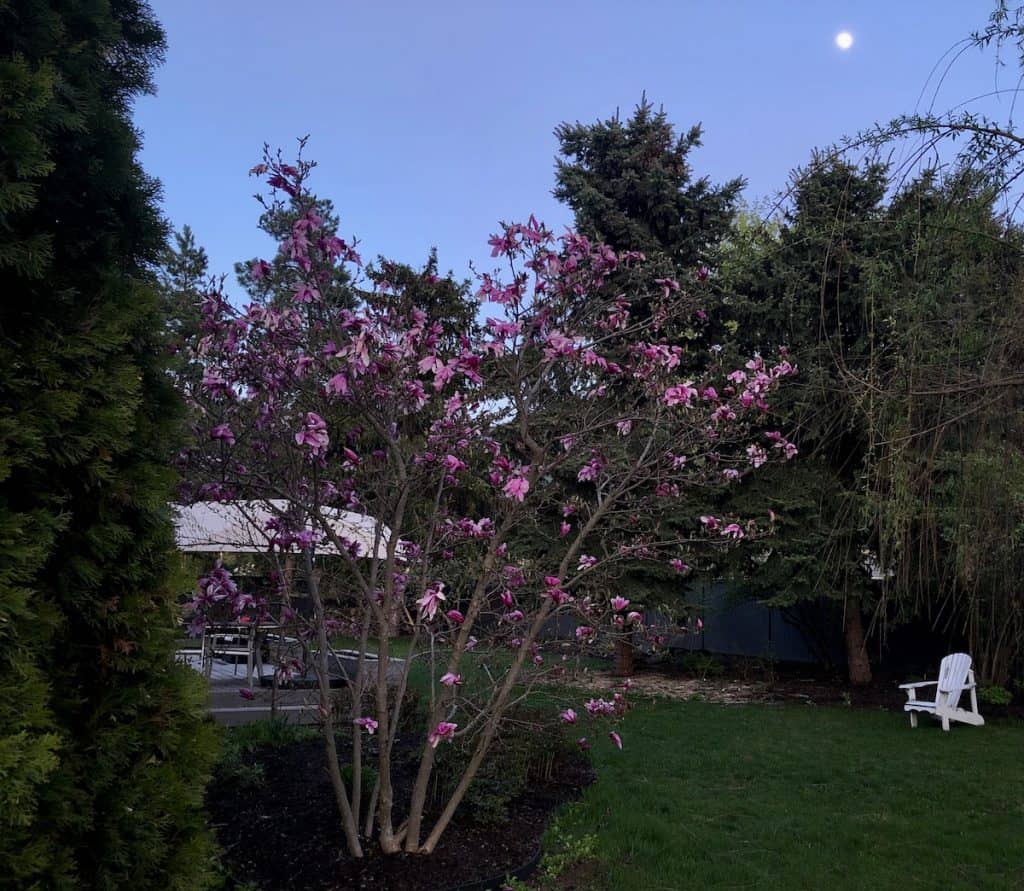
Mature size of Betty Magnolia trees
Betty Magnolia plants are generally trained into large shrubs or small specimen trees. They tend to develop multiple trunks. These plants will be put on low branches, which are often pruned away to shape the plant as an upright shrub or standard tree.
The Betty Magnolia in the photo below was planted 15 years ago and it’s about 15′ high. This particular plant is growing in nice sandy loam and is on a drip irrigation line. Up the road, there is another Betty Magnolia around the same age that has only grown to perhaps 10′. It is growing in very heavy, dense clay soil and was not on a drip line until quite recently. Both are in similar sun exposure conditions. So, while Betty Magnolia certainly does tolerate clay soil, the plant may not grow quite as large in less-than-ideal soil conditions (which can be a good thing!).
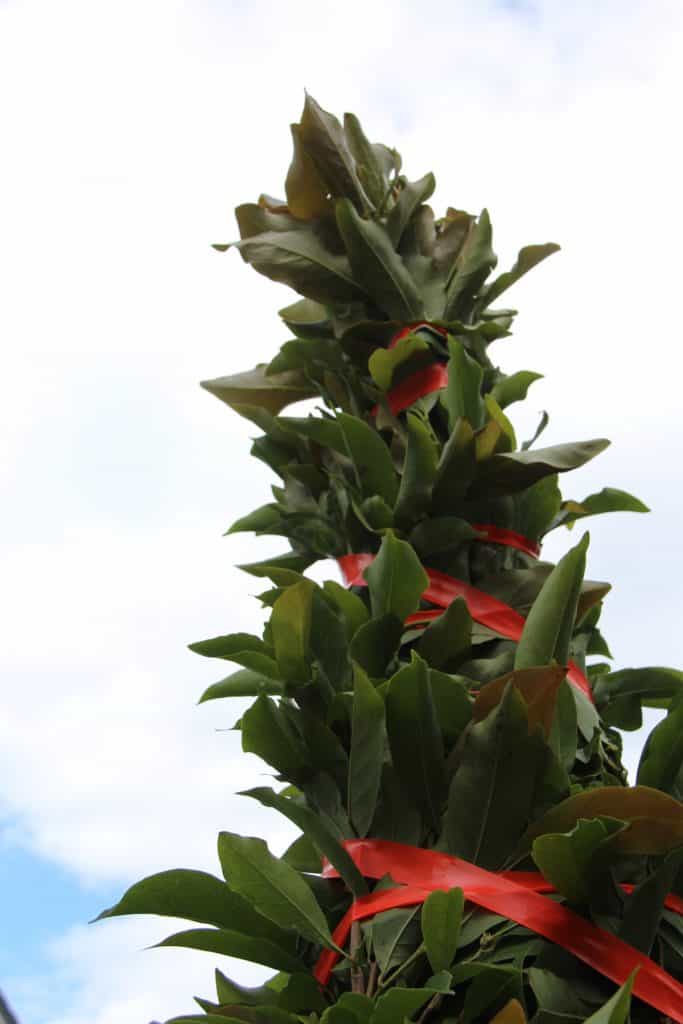
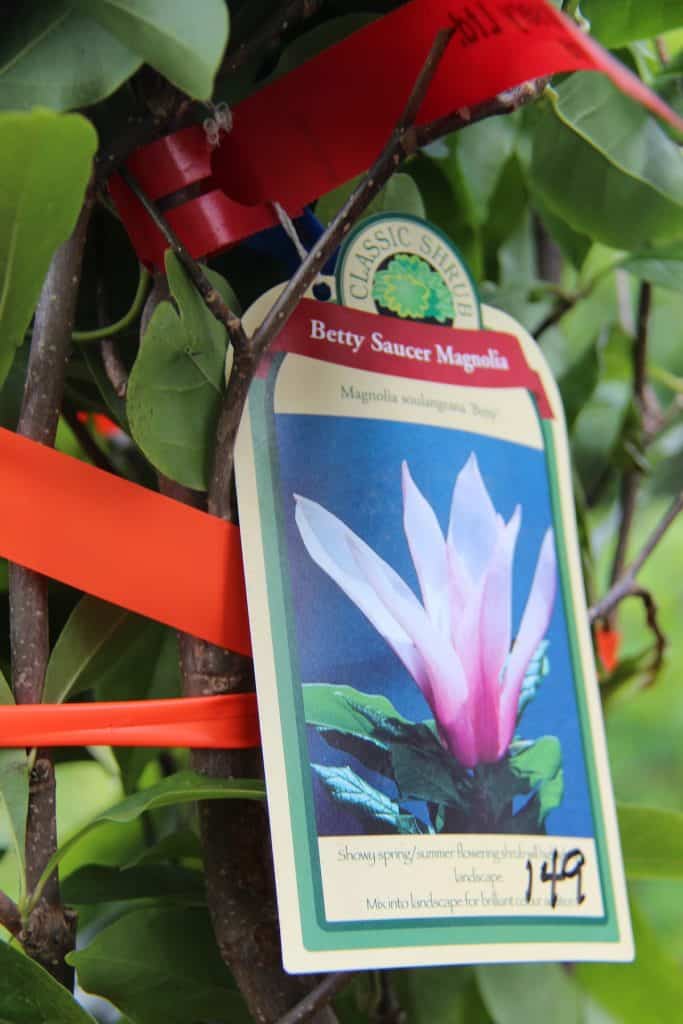
Tips for planting a Betty Magnolia
Betty Magnolias can be planted in most soils. As discussed above, we’ve grown them successfully in both a nice sandy loam and heavy clay soil. These plants do like the sun, but also appreciate a bit of shelter from the elements. I tend to situate them near evergreen hedges or foundation plantings so that they’re not completely exposed to the dry winter winds.
Dig a hole for the magnolia that’s about twice as wide as the plant pot or root ball. Some gardeners like to dig round holes and now some gardeners are preferring square holes! Things are always changing. The planting hole needn’t be deep though. Make the hole just deep enough to plant the magnolia so the soil level of the magnolia plant is level with the surrounding soil level in your garden.
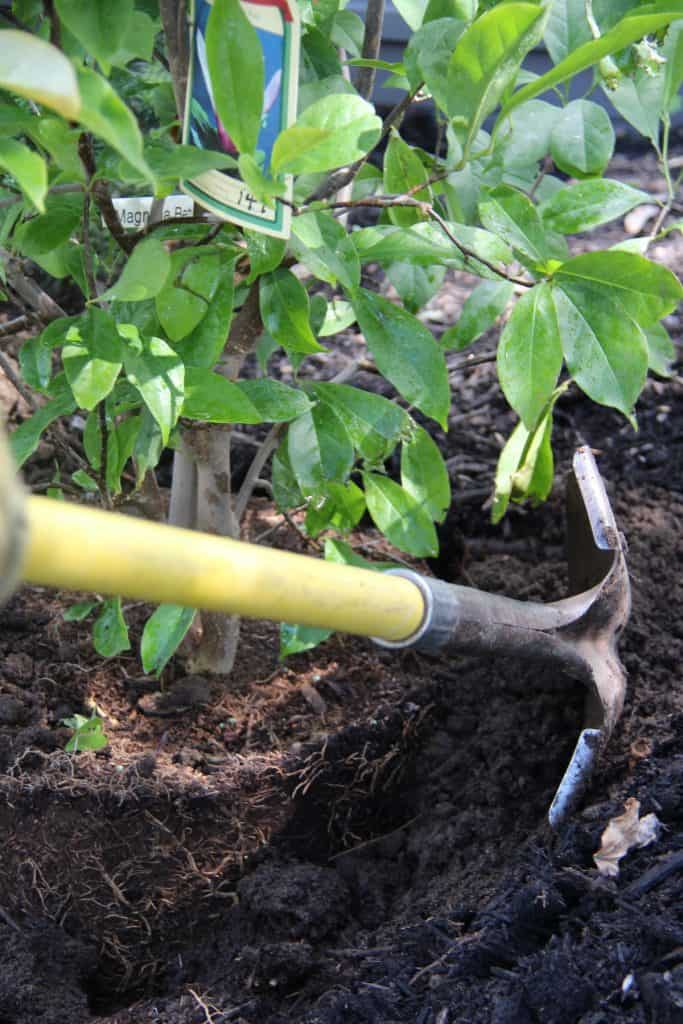
Mulch the soil after planting, but keep the mulch away from the trunks. Place an inch or two of homemade compost as an organic mulch on the soil under the canopy of the leaves. I like to keep the mulch about 6″ away from the woody stems of the Magnolia (and other woody shrubs and trees). This allows for air circulation and minimizes the moist conditions that diseases seem to love.
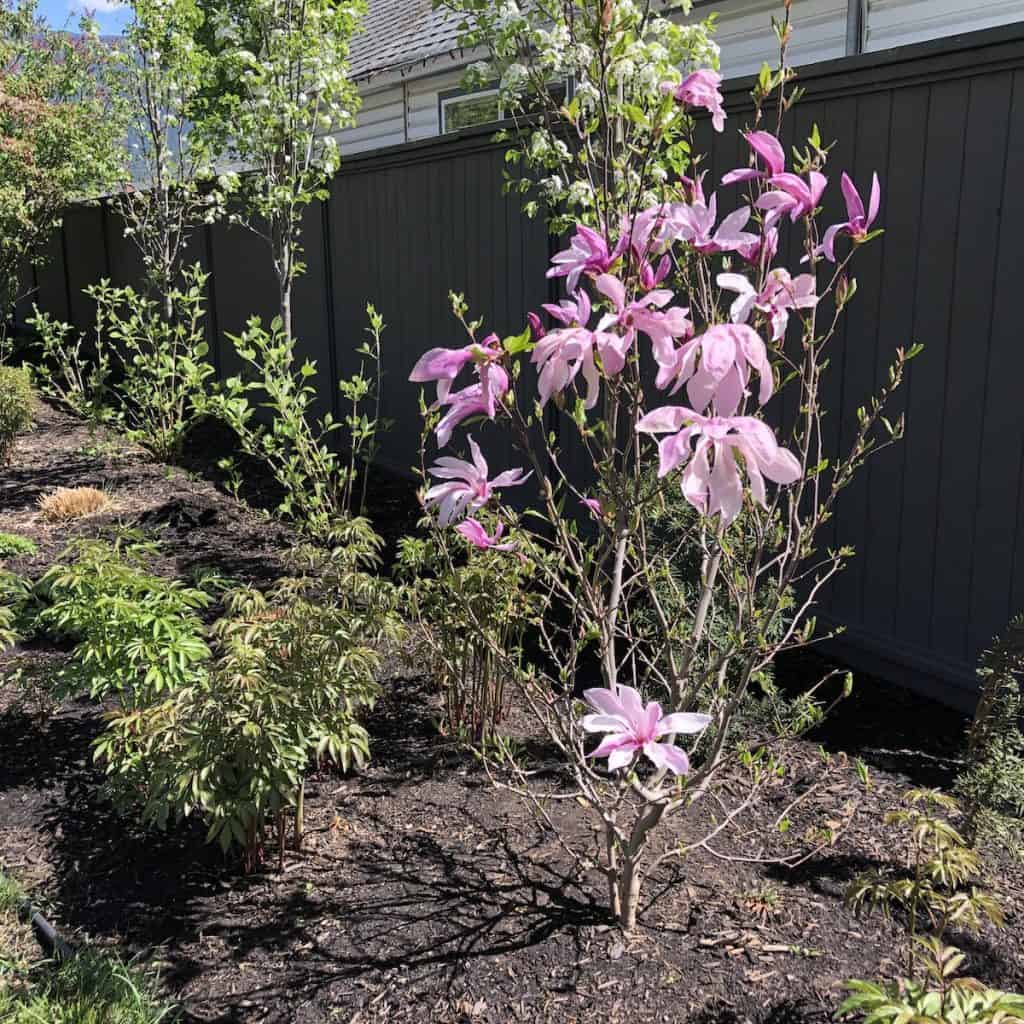
Don’t expect a banner year for blooms in the beginning. The year after planting a Betty Magnolia, it may bloom, but there will only be a handful of flowers. The Betty Magnolia planted in the pictures above had only about a dozen flowers on it during the season following planting. So did the other one that was planted at the same time last summer.. Remember that Betty Magnolias grow their flower buds in the summer/fall for the coming spring.
